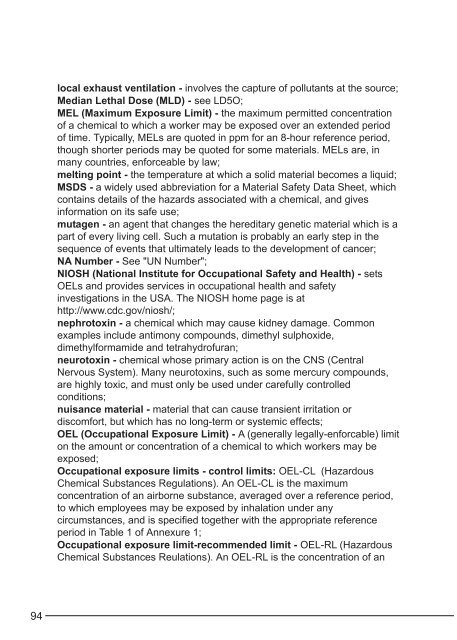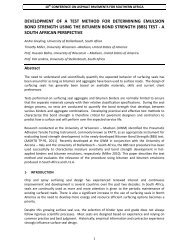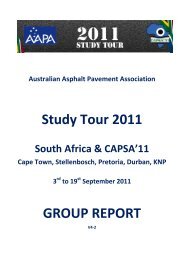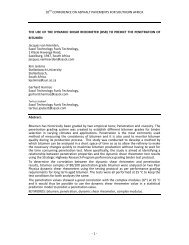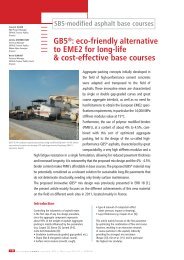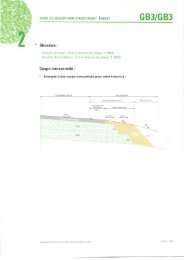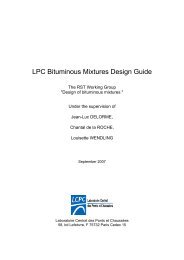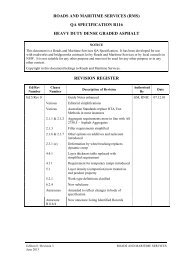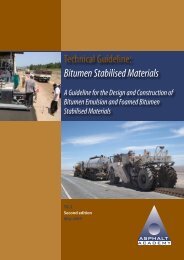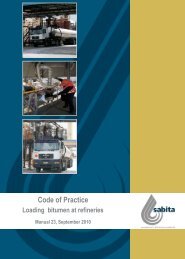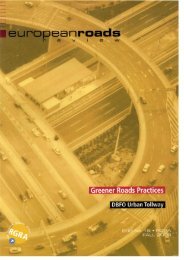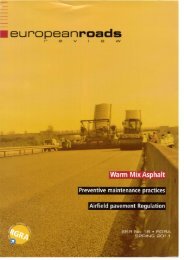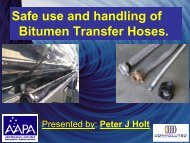Guide to the safe handling of solvents in a bituminous ... - Aapaq.org
Guide to the safe handling of solvents in a bituminous ... - Aapaq.org
Guide to the safe handling of solvents in a bituminous ... - Aapaq.org
- No tags were found...
You also want an ePaper? Increase the reach of your titles
YUMPU automatically turns print PDFs into web optimized ePapers that Google loves.
94local exhaust ventilation - <strong>in</strong>volves <strong>the</strong> capture <strong>of</strong> pollutants at <strong>the</strong> source;Median Lethal Dose (MLD) - see LD5O;MEL (Maximum Exposure Limit) - <strong>the</strong> maximum permitted concentration<strong>of</strong> a chemical <strong>to</strong> which a worker may be exposed over an extended period<strong>of</strong> time. Typically, MELs are quoted <strong>in</strong> ppm for an 8-hour reference period,though shorter periods may be quoted for some materials. MELs are, <strong>in</strong>many countries, enforceable by law;melt<strong>in</strong>g po<strong>in</strong>t - <strong>the</strong> temperature at which a solid material becomes a liquid;MSDS - a widely used abbreviation for a Material Safety Data Sheet, whichconta<strong>in</strong>s details <strong>of</strong> <strong>the</strong> hazards associated with a chemical, and gives<strong>in</strong>formation on its <strong>safe</strong> use;mutagen - an agent that changes <strong>the</strong> hereditary genetic material which is apart <strong>of</strong> every liv<strong>in</strong>g cell. Such a mutation is probably an early step <strong>in</strong> <strong>the</strong>sequence <strong>of</strong> events that ultimately leads <strong>to</strong> <strong>the</strong> development <strong>of</strong> cancer;NA Number - See "UN Number";NIOSH (National Institute for Occupational Safety and Health) - setsOELs and provides services <strong>in</strong> occupational health and <strong>safe</strong>ty<strong>in</strong>vestigations <strong>in</strong> <strong>the</strong> USA. The NIOSH home page is athttp://www.cdc.gov/niosh/;nephro<strong>to</strong>x<strong>in</strong> - a chemical which may cause kidney damage. Commonexamples <strong>in</strong>clude antimony compounds, dimethyl sulphoxide,dimethylformamide and tetrahydr<strong>of</strong>uran;neuro<strong>to</strong>x<strong>in</strong> - chemical whose primary action is on <strong>the</strong> CNS (CentralNervous System). Many neuro<strong>to</strong>x<strong>in</strong>s, such as some mercury compounds,are highly <strong>to</strong>xic, and must only be used under carefully controlledconditions;nuisance material - material that can cause transient irritation ordiscomfort, but which has no long-term or systemic effects;OEL (Occupational Exposure Limit) - A (generally legally-enforcable) limi<strong>to</strong>n <strong>the</strong> amount or concentration <strong>of</strong> a chemical <strong>to</strong> which workers may beexposed;Occupational exposure limits - control limits: OEL-CL (HazardousChemical Substances Regulations). An OEL-CL is <strong>the</strong> maximumconcentration <strong>of</strong> an airborne substance, averaged over a reference period,<strong>to</strong> which employees may be exposed by <strong>in</strong>halation under anycircumstances, and is specified <strong>to</strong>ge<strong>the</strong>r with <strong>the</strong> appropriate referenceperiod <strong>in</strong> Table 1 <strong>of</strong> Annexure 1;Occupational exposure limit-recommended limit - OEL-RL (HazardousChemical Substances Reulations). An OEL-RL is <strong>the</strong> concentration <strong>of</strong> an


